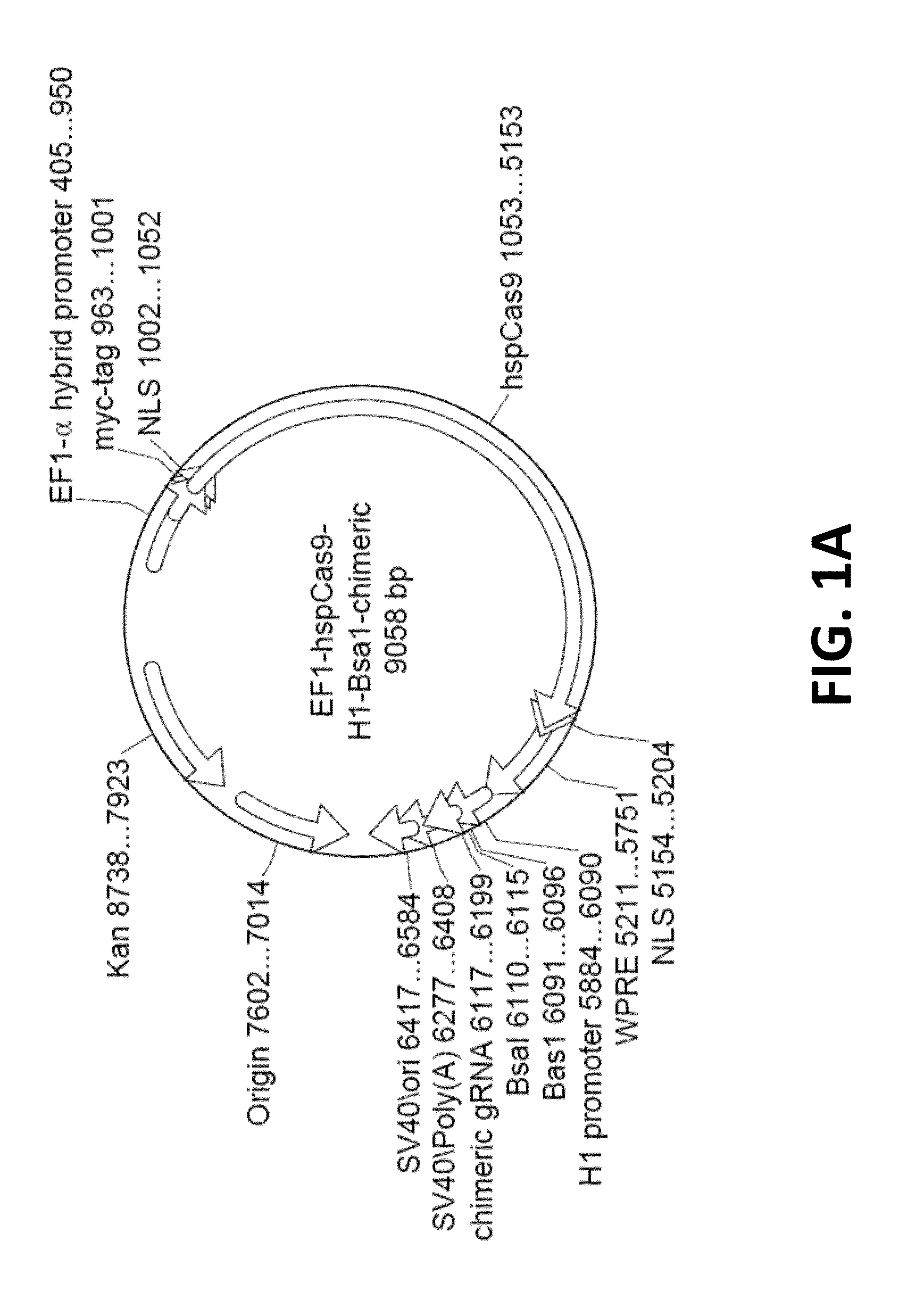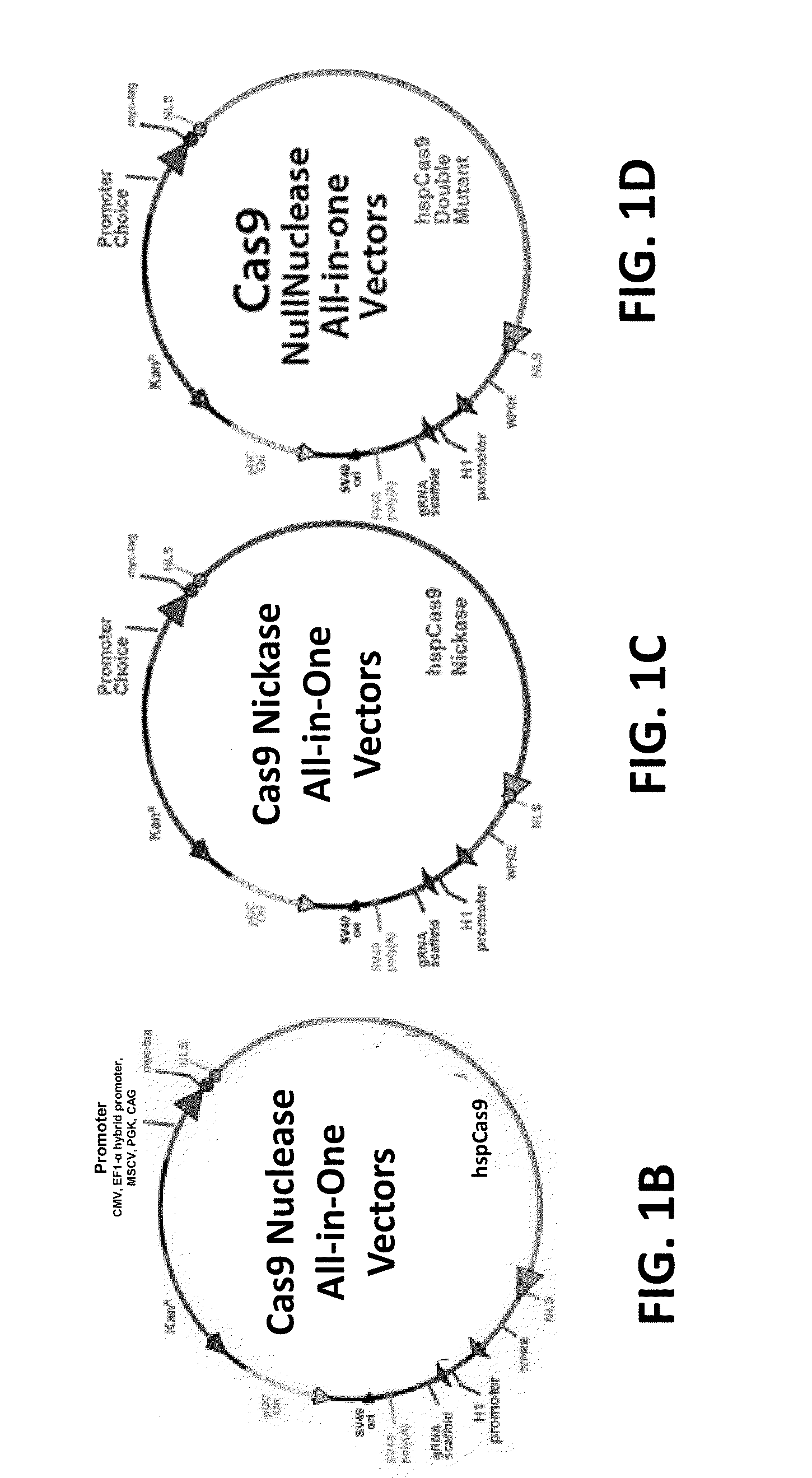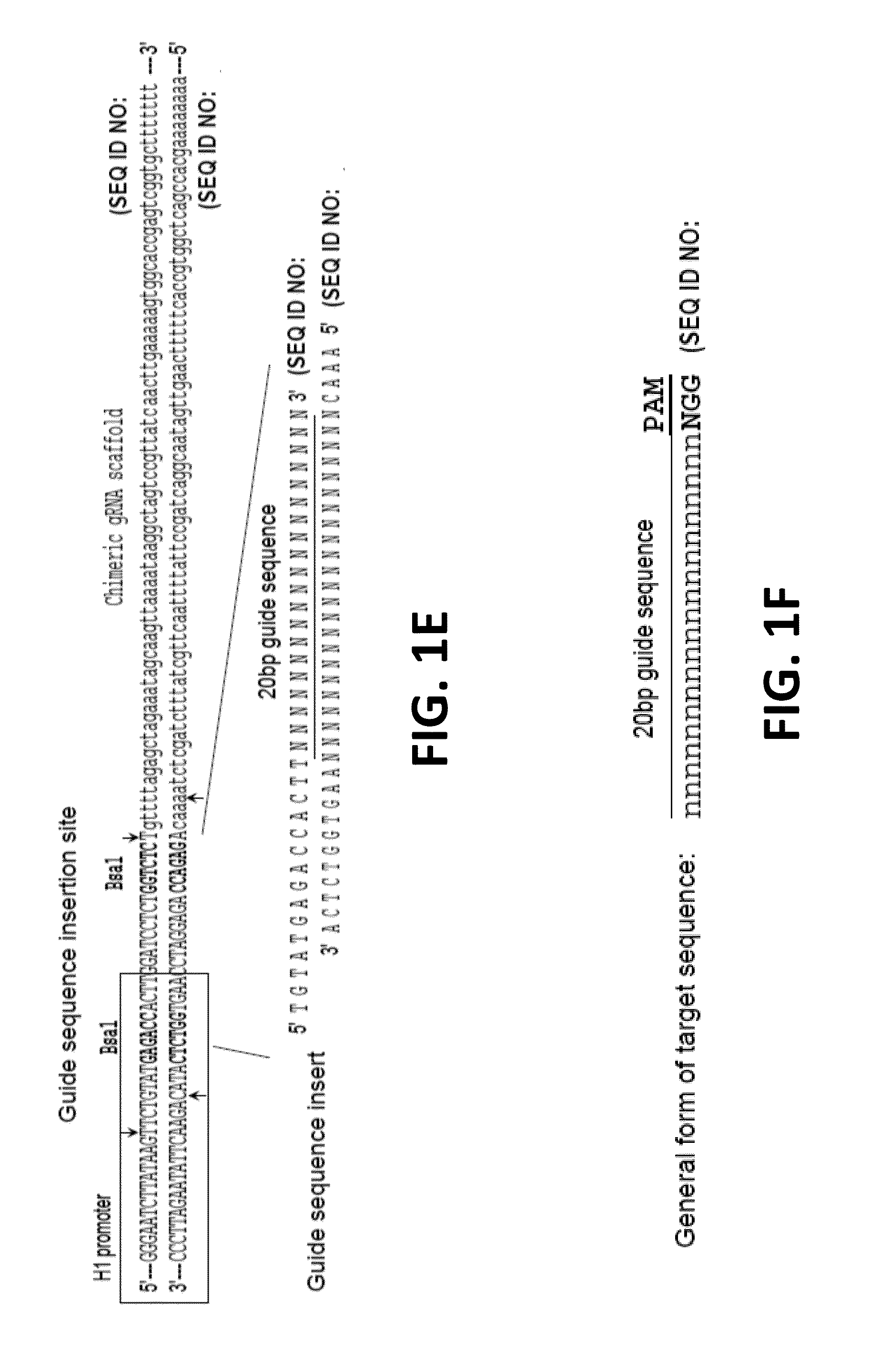Crispr/cas systems for genomic modification and gene modulation
a technology applied in the field of genomic modification and gene modulation by the bacteriophage, can solve the problems of unproven, unproven, and unproven gene editing tools that are efficient, flexible, and cost-effective, and achieve the effect of reducing the number of bacterial components
- Summary
- Abstract
- Description
- Claims
- Application Information
AI Technical Summary
Benefits of technology
Problems solved by technology
Method used
Image
Examples
example 1
Design of a Codon-Optimized Polynucleotide Encoding the Cas9 Protein
[0242]A wide variety of factors regulate and influence gene expression levels. The expression of nucleotide sequences (e.g., protein open reading frames) of bacterial-origin in mammalian host cells can be technically problematic. Differences between bacterial and mammalian transcription and translation machinery often results in failed, poor or non-optimal expression of bacterial sequences when transferred to mammalian host cells. These obstacles to expression of bacterial proteins in mammalian host cells include differences in codon preference well as a wide variety of other differences in nucleic acid processing.
[0243]As a first step to creating genomic engineering tools, this example describes the design of polynucleotides that encode the bacterial Cas9 protein, and further, manipulates the bacterial sequence in order to optimize expression of the Cas9 open reading frame in mammalian host cells.
[0244]Taking into ...
example 2
Construction of an all-in-One CRISPRII System
[0251]This example describes the design and construction of vectors for the expression of CRISPR components (Cas9 and guide RNA) in mammalian cells. These engineered components are used to induce targeted cleavage of genomic DNA in mammalian cells, a first step in genomic DNA editing.
[0252]In order to achieve high efficiency cleavage of target genomic sequences of interest by Cas9, and further to provide a simple, transfection-friendly single plasmid system, an all-in-one vector was engineered for providing these sequences to a mammalian host cell. This all-in-one CRISPR system was constructed by cloning the mammalian codon optimized Cas9 sequence (hspCas9; FIG. 23) and a crRNA-tracrRNA chimeric guide molecule (gRNA scaffold) into a single mammalian expression construct. The construct engineered for this use is depicted in the maps shown in FIGS. 1A and 1B.
[0253]As shown in FIG. 1A, expression of the human codon optimized polynucleotide e...
example 3
Validation of Expression of Bacterial-Encoded Cas9 in Human Cells
[0256]This example describes the validation testing of the native bacterial Cas9 nucleotide sequence (written spCas9) for its ability to express in mammalian host cells. Although the vector described in Example 2 used the engineered mammalian codon-optimized Cas9 polynucleotide sequence (written hspCas9) to construct the all-in-one CRISPR system expression vector, this example addresses whether the native bacterial Cas9 nucleotide sequence can also be used in the all-in-one mammalian expression vectors.
[0257]In order to test whether the native bacterial encoded Cas9 gene was able to express in human cells, an expression vector containing the native bacterial Streptococcus pyogenes coded cas9 gene (referred to as spCas9) was constructed, as shown in FIG. 2A. As shown in that figure, the spCas9 was augmented with N-terminus NLS, and further fused at the C-terminus with mCherry (a red fluorescent protein) with an addition...
PUM
| Property | Measurement | Unit |
|---|---|---|
| concentration | aaaaa | aaaaa |
| length | aaaaa | aaaaa |
| flexible | aaaaa | aaaaa |
Abstract
Description
Claims
Application Information
 Login to View More
Login to View More - R&D
- Intellectual Property
- Life Sciences
- Materials
- Tech Scout
- Unparalleled Data Quality
- Higher Quality Content
- 60% Fewer Hallucinations
Browse by: Latest US Patents, China's latest patents, Technical Efficacy Thesaurus, Application Domain, Technology Topic, Popular Technical Reports.
© 2025 PatSnap. All rights reserved.Legal|Privacy policy|Modern Slavery Act Transparency Statement|Sitemap|About US| Contact US: help@patsnap.com



